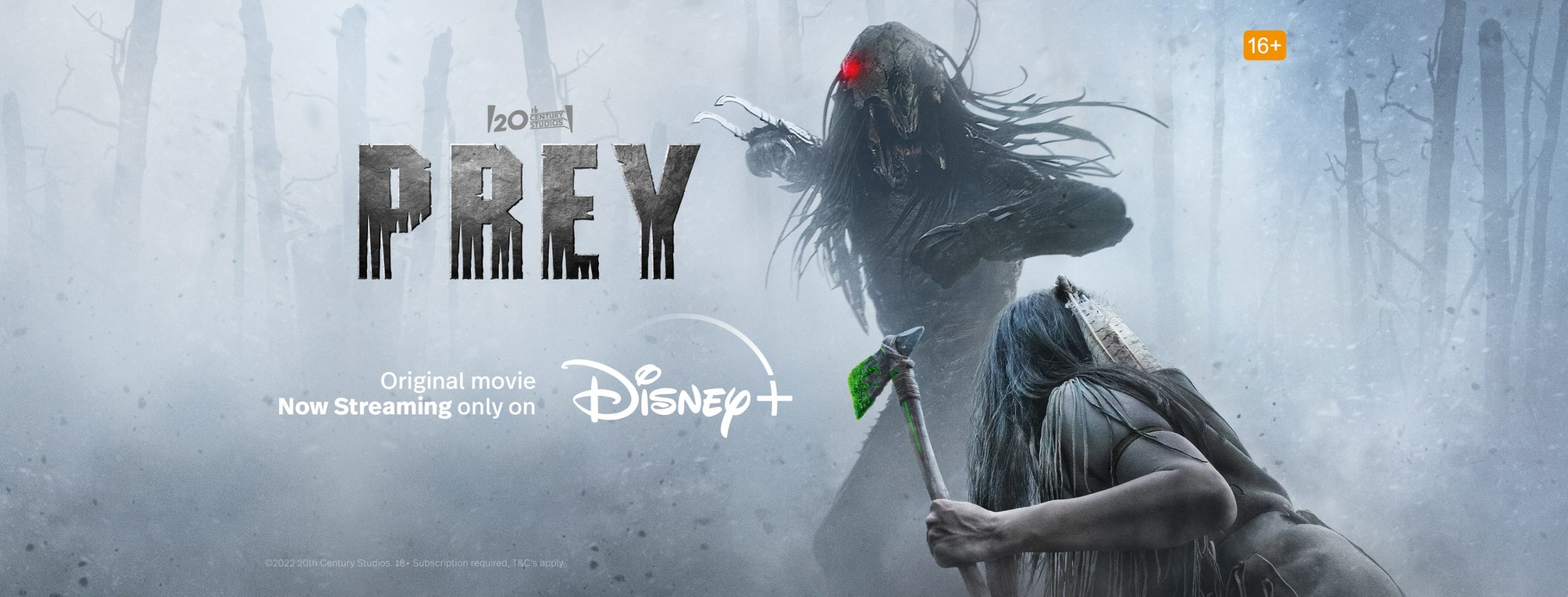
Prey successfully represents Comanche culture, finds Film Editor Jess Parker, but fails to connect the viewer to its plot or characters
Released to Disney+ in July of 2022, Dan Trachtenberg’s Prey is a Science-Fiction Action movie that acts as a prequel to the previous films in the Predator movie franchise. Prey is the fifth instalment in the Predator franchise, taking audiences 300 years back in time from the events of the initial 1987 Predator film.
Set in the Northern Great Plains of North America in 1719, Prey follows Naru (Amber Midthunder), a young Comanche woman who is trained as a healer but dreams of becoming a warrior. Naru’s older brother, Taabe (Dakota Beavers), saves Naru from a mountain lion and becomes the tribe’s War Chief. This title and her failure in hunting the mountain lion pushes Naru to stalk a threat greater than the Tribe could ever imagine: The Predator (Dane DiLiegro).
Prey, however, struggles to build a connection with its audience
Midthunder’s performance as Naru is very strong, portraying her as a character committed to the survival of her tribe in the face of an unknown evil. Initially rejected as a hunter due to her gender, Naru’s combat and quick-thinking skills allow her to finally defeat the humanoid Predator and protect her people. Midthunder’s close dynamic with Beavers as her brother feels natural, with the two bouncing off of each other’s energy with both aggression and compassion.
Prey, however, struggles to build a connection with its audience. The relationships within the tribe are already very established, but we do not gain a real insight into them. I constantly felt like a silent observer, instead of being immersed in the tension and pressure of the film’s events. I simply did not care too much about the survival of the characters.
It is incredibly important to note Prey’s dedication to the culture of the Comanche people in the making of this film
It is incredibly important to note Prey’s dedication to the culture of the Comanche people in the making of this film. The Comanche setting and characters are not all, the film can also be watched with a Comanche dubbing. Prey is setting an example for other big-budget features as the first major release that can be dubbed in its native language. By featuring a majority-indigenous cast, Prey contrasts previous Native American stereotypes that have plagued Hollywood, and progressively places agency in the hands of those that the film revolves around and, ultimately, profits off of.

Prey is a beautifully shot film, making the most of the scenic Stoney Nakoda Nation grounds in Canada that became the primary filming location. Naru’s journey is intertwined with her connection to nature, and cinematographer Jeff Cutter successfully contrasts the beauty and ferocity of nature within the tribe’s lands.
The extensive use of practical effects within Prey is admirable. Portrayed by DiLiegro, we see a slightly different physical appearance to The Predator than in the initial 1987 film, creating a Feral Predator character that is physically adapted to a different environment and landscape. The Feral Predator costume features animatronics that bring the practical suit to life, allowing for the creature’s face to move and for DiLiegro to perform The Predator’s roar. In the final cut, these practical effects are blended with CGI to create a visually believable alien warrior, and allowing for his facial movements to appear authentic, yet very much present within the scenes.
Verdict
Ultimately, I feel fairly indifferent about Prey. Prequels can often tarnish well-established and iconic franchises like Predator. I do not believe that Prey has done this. I do, however, feel that it was not a necessary instalment in the film series, and that it did not provide anything that was missing from the other four films. Prey’s inclusion and appreciation of Comanche culture is certainly a step in the right direction for Hollywood, but this does not detract from the fact that this film is simply retelling a story that we already know. I was surprised by nothing, yet nothing felt outrageously bad about the film.
In all honesty, I do think that Prey is worth a watch if you are already a fan of the Predator franchise, however, I would not go out of my way to seek Prey out if I was not already aware of the context surrounding it. It is a shame that against all that Prey does right surrounding the film’s contexts, it is unable to provide where it really needs to land: in character and plot. In the end, I felt underwhelmed and disappointed by how isolated I felt from the story unfolding before me.
Rating: 2.5/5
Prey is now streaming on Disney +
For more recent releases, check out these other articles from Redbrick Film:
Review: Not Okay | Redbrick Film

Comments